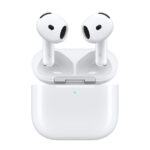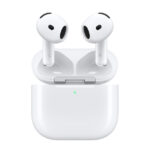Taking notes on an iPad has become easier than ever with many free apps available. These apps help students and professionals capture ideas, organize information, and keep track of important details without spending money. OneNote is considered one of the best cross-platform, free note-taking options for those who like to stay organized across all their devices.
Many students already have free access to Microsoft 365 through their schools, making OneNote a practical choice for students. Other free apps like FreeNotes support various note formats without requiring expensive upgrades. The right app depends on each person’s needs for features like PDF markup, handwriting recognition, and cloud syncing.
1. OneNote
OneNote stands out as a top free note-taking app for iPad users. This Microsoft application offers a comprehensive digital notebook experience without any cost to users.
Many students already have access to OneNote through their school’s Microsoft 365 subscription, making it an economical choice for academic use.
The app shines with its cross-platform capabilities. Users can start notes on an iPad and seamlessly continue working on their phone or computer later, keeping all content synchronized.
OneNote organizes information in a notebook structure with sections and pages. This system helps users keep their notes tidy and easy to find later.
Drawing and handwriting features work well with the Apple Pencil. Students can sketch diagrams, solve math problems, or take handwritten notes directly on the screen.
The search function in OneNote is powerful. It can even find text within images or handwritten notes, making it easy to locate information quickly.
Microsoft offers OneNote completely free across all devices, which is rare for such a feature-rich app. There’s no premium tier or hidden costs to worry about.
The app integrates well with other Microsoft products. Users can attach Excel spreadsheets, embed PowerPoint slides, or link to other OneNote pages within their notes.
OneNote supports a variety of content types in a single note. Text, images, audio recordings, and drawings can all exist together on the same page.
For iPad users who frequently work with other people, OneNote allows real-time collaboration. Multiple people can edit the same notebook simultaneously, making group projects easier.
According to user reviews, OneNote ranks highly among note-taking apps because it balances powerful features with ease of use.
2. Goodnotes
Goodnotes is technically not free but offers significant value for note-taking on iPad. The app has a free version with limited features, while the full version requires a one-time purchase.
Many students consider Goodnotes worth the investment for its outstanding handwriting experience. The app makes digital writing feel natural and responsive, closely mimicking the feel of writing on paper.
One standout feature is Goodnotes’ error recognition. The app can recognize every typo you make, helping students maintain cleaner, more accurate notes even when writing quickly during lectures.
Organization in Goodnotes is straightforward and intuitive. Users can create notebooks, folders, and custom categories to keep all their academic materials in order. Finding specific notes later becomes much easier with the search function.
The latest version, Goodnotes 6, has improved the user experience even further. The interface is clean and user-friendly, making it accessible even for those new to digital note-taking.
PDF annotation is another strength of this app. Students can import course materials, add notes directly on the documents, highlight important sections, and keep everything in one place.
According to user reviews, Goodnotes offers the best mix of essential features with an intuitive interface. This balance makes it popular among students who want functionality without overwhelming complexity.
The app supports multiple paper styles and templates. Users can choose lined, grid, or dotted backgrounds, or create custom templates that suit their specific note-taking style.
For creative students, Goodnotes includes various pen styles and colors. This versatility allows for color-coding subjects or creating visually engaging notes that enhance memory retention.
Goodnotes is widely regarded as a powerhouse for note-takers with capabilities extending beyond basic notes to music notation and comprehensive PDF markup.
3. Notability
Notability stands out as a popular note-taking app that offers a free tier with essential features. Users can experience its powerful yet simple interface before deciding to upgrade.
The app lets students write, draw, and annotate with ease. Its tools include several pen styles and formatting options that help organize study materials efficiently.
One unique feature is multi-note support. This allows users to open two notes simultaneously and arrange them within the app for better comparison or reference.
The free version gives students a chance to try Notability’s core functions. Many find this sufficient for basic class notes and homework organization.
Apple recognized Notability’s quality by naming it an Editor’s Choice in the App Store. This recognition speaks to its user-friendly design and helpful features.
Recent updates have added AI capabilities to the app. These smart functions can help organize notes and improve productivity without much extra effort.
Students appreciate how Notability handles different content types. From lecture notes to storyboards, the app accommodates various creative and academic needs.
The interface strikes a balance between simplicity and function. Even new iPad users can quickly learn how to navigate the tools and create clean, organized notes.
While the paid version offers more storage and features, the free tier serves as a good starting point. Students can test if Notability matches their note-taking style before committing to a subscription.
4. Apple Notes
Apple Notes is a free app that comes installed on all iPads. You don’t need to download anything extra to start taking notes right away.
The app has a clean design that makes it easy to use. You can write text notes, make checklists, and add photos to your notes without any fuss.
One big advantage is how well it works with other Apple devices. Notes you create on your iPad show up on your iPhone and Mac automatically through iCloud. This cross-platform sync makes it perfect for students who use multiple Apple devices.
The drawing tools let you sketch ideas or write by hand. While not as advanced as some paid apps, they work well for basic note-taking needs.
You can organize notes in folders and use the search function to find information quickly. The app even recognizes text in images, making handwritten notes searchable.
Apple Notes supports scanning documents too. Just use your iPad camera to capture a page, and the app converts it to a clear digital version.
For students on a budget, Apple Notes delivers solid features without any cost. Many people find it’s all they need for text-based notes.
The app receives regular updates, adding new features over time. Recent versions have improved the drawing tools and added better organization options.
Password protection for sensitive notes is another helpful feature. You can keep private information secure while still having it available when needed.
Apple Notes may not have all the fancy features of paid apps, but it’s recommended as one of the best free options for students. It handles most note-taking tasks without complicated settings or extra costs.
5. Google Keep
Google Keep stands out as a simple yet powerful free note-taking app for iPad users. The app lets you capture, edit, and share notes from any device, making it perfect for people who switch between iPad, phone, and computer.
The clean interface makes it easy to start taking notes right away. You can create text notes, checklists, or even add photos and voice recordings to your notes without any fuss.
Organization in Google Keep is straightforward with colored labels. This feature helps sort notes into categories, making them easier to find later. The search function works well too when you need to locate specific information quickly.
One of Keep’s strong points is its seamless syncing across devices. Notes update almost instantly between your iPad and other devices where you use your Google account.
The app also supports collaboration. You can share notes with friends or colleagues, allowing everyone to edit and update information together. This makes it handy for group projects or shared shopping lists.
Google Keep shines in its simplicity. While it lacks some advanced features of paid apps, it handles basic note-taking tasks perfectly. The digital notes are accessible from anywhere, which is convenient for busy people.
The minimalist design keeps everything uncluttered. Notes appear as colorful cards that you can arrange and view at a glance, similar to physical sticky notes on a board.
For iPad users who need a free, reliable note-taking solution without complicated features, Google Keep delivers the essentials. It works especially well within the Google ecosystem, connecting smoothly with other Google services.
6. Simplenote
Simplenote lives up to its name as one of the most straightforward note-taking apps available for iPad users. This free app syncs across multiple devices including iOS, Android, Mac, Windows, and Linux platforms.
The interface is clean and minimalist, making it perfect for students or professionals who prefer text-based notes without fancy features getting in the way. There’s no clutter to distract you from your thoughts.
What sets Simplenote apart is its focus on speed and reliability. Notes load quickly, and the search function works efficiently to help find information when needed.
The app includes basic organizational tools like tags to sort notes by topic or project. This system offers enough structure without becoming complicated.
Simplenote also includes version history, which saves previous drafts of notes. This feature proves helpful when you need to recover deleted information or view how your notes evolved over time.
Collaboration features allow sharing notes with classmates or colleagues. Multiple people can view and edit the same note, making group projects easier to manage.
The app works offline and automatically syncs when connected to the internet. This ensures your notes remain accessible even without a connection and updates across all your devices when possible.
Unlike some competitors, Simplenote doesn’t include drawing tools or handwriting support with Apple Pencil. It focuses exclusively on typed notes rather than attempting to be an all-in-one solution.
For students seeking a simple, free note-taking option, Simplenote provides a reliable choice that won’t overwhelm with excessive features or steep learning curves.
7. MetaMoji Note Lite
MetaMoji Note Lite stands out as a versatile free note-taking app for iPad users. This cross-platform tool works on iPad, iPhone, and even Android devices.
The app offers a clean interface that lets users switch between handwriting and typing. You can sketch ideas with stylish pens and capture your thoughts visually.
MetaMoji Note Lite acts as more than just a note-taking app. It doubles as a PDF annotation tool and digital scrapbook for collecting ideas and information.
The free version provides essential features that many students and professionals need. You can create basic notes, organize your thoughts, and save your work across devices.
If users want more functionality, the full version adds voice memo, audio editing, text formatting, and password protection. The lite version serves as a good introduction to these premium features.
Users appreciate how MetaMoji lets them express ideas through both writing and sketching. The app functions similarly to other popular options like Noteshelf and Notability, but without the cost.
One unique aspect is its universal sketching capabilities. The pen tools feel natural and responsive, making it practical for quick diagrams or detailed illustrations.
For iPad users seeking a cost-effective solution, MetaMoji Note Lite provides a solid foundation. The free version handles basic note-taking needs while offering a glimpse of what the full version can do.
The app syncs across devices, so notes created on an iPad can be accessed later on other platforms. This flexibility makes it useful for people who work across multiple devices throughout the day.
8. FreeNotes
FreeNotes is a newer entry in the note-taking app space that has quickly gained popularity. This completely free app offers many features that rival paid alternatives like GoodNotes and Notability.
The app supports a wide range of note formats without requiring expensive upgrades or subscriptions. Users can easily take handwritten notes, type text, and annotate PDFs all in one place.
FreeNotes shines with its intuitive interface that doesn’t overwhelm new users. The writing experience feels smooth and responsive, making it comfortable for extended note-taking sessions.
One standout feature is the app’s organization system. Notes can be sorted into folders and subfolders, helping students and professionals keep track of different subjects or projects.
The PDF annotation tools work well for marking up documents and textbooks. You can highlight, underwrite, and add comments to any PDF file you import.
Some users on Reddit have mentioned FreeNotes among their top free note-taking recommendations for students. It competes well against other free options.
According to app reviews, FreeNotes is considered “an excellent alternative” to Apple Notes, especially for users who need more features but aren’t ready to purchase a premium app.
The App Store description notes that it’s “one of the best note-taking apps” available for iPad, particularly impressive considering its free price point.
While it may lack some advanced features found in paid apps, FreeNotes covers all the essentials most users need for daily note-taking. The developers also regularly update the app with new features and improvements.
9. Evernote
Evernote stands as one of the most established note-taking apps available for iPad users. The platform offers a free tier that gives users access to basic note-taking features and cross-device syncing capabilities.
With Evernote, iPad users can create text notes, add images, and organize information into notebooks. The app’s search function helps locate specific notes quickly, even among large collections.
The free version of Evernote does come with some limitations. Users are restricted to syncing across only two devices, and monthly uploads are capped. For many casual note-takers, these restrictions may not pose significant problems.
Evernote shines in its organizational capabilities. The app helps users capture and prioritize ideas, projects, and to-do lists in a structured manner. This makes it particularly useful for people juggling multiple responsibilities.
The interface on iPad is clean and intuitive. Users can create notes with a single tap and access their content across different platforms including desktop computers and smartphones.
For those who eventually need more features, Evernote offers paid tiers with additional capabilities. However, many iPad users find the free version sufficient for basic note-taking needs.
The app includes web clipping features that let users save interesting articles or web pages directly to their notebooks. This functionality extends the app beyond simple note-taking into knowledge management.
Evernote can be downloaded for free on the App Store, and new users can create an account without any upfront payment. This accessibility makes it a good starting point for anyone new to digital note-taking.
While some productivity enthusiasts have moved to newer alternatives, Evernote remains a solid choice for iPad users who want a reliable, time-tested note-taking solution with good organizational tools.
10. Zoho Notebook
Zoho Notebook stands out as a versatile note-taking app that works well on iPad. It’s completely free and doesn’t bombard users with ads, making it a clean experience for students and professionals alike.
The app lets users create different notebooks for various subjects or projects. Each notebook can contain different types of notes including text, audio, photos, and even to-do lists, helping users stay organized.
One of the app’s strengths is its cross-platform availability. Zoho Notebook seamlessly syncs across your devices, so notes created on an iPad can be accessed later on a phone or computer without any hassle.
The interface is user-friendly and visually appealing. Notes can be color-coded and customized with different card styles, making it easier to spot specific information at a glance.
For iPad users specifically, Zoho Notebook takes advantage of iPadOS features. The app supports enhanced searches, allowing users to quickly find notes and saved photos when needed.
Students will appreciate that Zoho Notebook is among the best free note-taking apps designed with their needs in mind. It offers tools to capture, organize, and share notes efficiently.
Security is another plus point. The app provides a secure space for all notes without compromising on features or charging premium fees for basic functionality.
Task management features are built right in. Users can manage to-dos and tasks alongside their regular notes, eliminating the need for a separate task management app.
While not as feature-rich as some paid alternatives, Zoho Notebook strikes a good balance between simplicity and functionality. It provides enough tools to be useful without becoming overwhelming.
Benefits of Using Note-Taking Apps
Note-taking apps transform how we capture and organize information, offering advantages that paper notes simply can’t match. They help students and professionals work smarter while keeping everything accessible.
Enhancing Productivity and Organization
Digital note-taking apps make information management easier and more efficient. Users can:
- Create searchable notes that can be found with a quick keyword search
- Organize content with folders, tags, and categories
- Insert various media including images, audio clips, and web links
- Draw and sketch ideas using Apple Pencil on iPad
The ability to quickly reorganize notes and thoughts helps students stay organized throughout busy semesters. Many apps offer templates for different purposes like lecture notes, project planning, or daily journaling.
Handwriting recognition in apps like GoodNotes lets users convert written notes to text, making them searchable later. This combines the cognitive benefits of handwriting with digital convenience.
Access and Sync Across Devices
A major advantage of digital note-taking is the ability to access notes from anywhere. With cloud syncing, your notes follow you everywhere.
Most quality note-taking apps automatically save changes and sync across devices. This means:
- Start notes on your iPad during class
- Review and edit on your iPhone while commuting
- Complete assignments on your laptop at home
This seamless experience eliminates the worry of forgetting notebooks or losing paper notes. Many free apps offer basic cloud storage that’s adequate for typical student use.
The ability to share notes with classmates through links or exports makes group projects more efficient. Some apps like CollaNote even offer real-time collaboration features in their free versions.
Key Features to Look For
When choosing a free note-taking app for your iPad, certain features can make a big difference in your productivity and user experience. The right combination of capabilities will help you create better notes with less effort.
Handwriting Recognition
Good handwriting recognition transforms your scribbles into searchable text. This feature lets you find notes quickly without remembering exactly where you wrote something. GoodNotes offers excellent handwriting recognition that works even with messy writing.
Look for apps that:
- Convert handwriting to text in real-time
- Allow searching through handwritten notes
- Maintain accuracy with different handwriting styles
- Work with multiple languages
The best apps will have adjustable sensitivity settings to match your writing style. They should also let you edit converted text easily when mistakes happen.
Handwriting recognition saves time when you need to share or edit notes later. It bridges the gap between the natural feel of writing by hand and the practicality of digital text.
Multimedia Support
Modern note-taking goes beyond text. Good apps should handle various media types to create richer notes. The default iOS Notes app includes basic multimedia support, while Notability offers more advanced options.
Essential multimedia features:
- Photo insertion and annotation
- Audio recording capability
- Video embedding
- Drawing and sketching tools
- Diagram creation
Apps with good multimedia support should maintain organization as your notes grow more complex. The ability to record audio while taking notes is particularly useful for students in lectures.
Look for apps that compress media files efficiently without sacrificing quality. This prevents your notes from becoming too large and taking up excessive storage space.
Cloud Storage Integration
Reliable cloud storage keeps your notes safe and accessible across devices. Most free note-taking apps offer some form of cloud backup, though storage limits vary. OneNote provides cross-platform sync capabilities that work well for people using multiple devices.
Key cloud storage considerations:
- Automatic backup frequency
- Cross-device synchronization
- Offline access capabilities
- Storage limits on free plans
- Support for popular services (iCloud, Google Drive, Dropbox)
The best apps sync quickly in the background without disrupting your work. They should also have conflict resolution when changes are made on different devices simultaneously.
Free plans typically offer limited storage, so check if the app allows selective syncing to maximize space. Some apps like CollaNote offer reasonable cloud storage options without requiring payment.
Frequently Asked Questions
Many iPad users have questions about finding the right free note-taking app that meets their specific needs. Here are answers to common questions about the best options available.
What are the top-rated free note-taking apps compatible with the Apple Pencil?
The Apple Pencil works great with several free note-taking apps. Apple Notes tops the list as a capable built-in option with excellent Apple Pencil support.
OneNote is another highly rated free option that works well with Apple Pencil, offering various pen styles and pressure sensitivity. It includes handwriting recognition that converts your notes to text.
Google Keep offers basic Apple Pencil support for simple handwritten notes and drawings with limited features but solid performance.
Which free note-taking applications offer seamless synchronization across iPad and iPhone?
Apple Notes provides perfect synchronization between all Apple devices through iCloud. Notes update instantly across iPad, iPhone, and Mac without any setup required.
OneNote syncs smoothly across iOS devices and even Windows computers through your Microsoft account. This makes it ideal for users who work across multiple platforms.
Google Keep also offers excellent cross-device synchronization, updating notes in real-time between iPad, iPhone, and any device with a web browser through your Google account.
What are the recommended free note-taking apps for college students using an iPad?
OneNote stands out for college students with its organization system of notebooks, sections, and pages. It handles typed notes, handwriting, audio recordings, and web clippings in one place.
Apple Notes works well for students who need quick, reliable note-taking without complexity. Recent updates added better organization with folders and tags to help manage coursework.
College students also appreciate Notability’s free tier, which allows basic note-taking with limited features but excellent handwriting experience and audio recording capability.
Can you recommend a free note-taking app that is optimized for the iPad Pro?
Apple Notes is perfectly optimized for iPad Pro, taking full advantage of the device’s power and display. It supports ProMotion technology for smooth writing and drawing.
OneNote works exceptionally well on iPad Pro, allowing users to take advantage of the larger screen with its flexible canvas and multi-window support.
For iPad Pro users wanting more advanced features, GoodNotes offers a limited free tier that showcases its powerful handwriting engine and precision that shines on the Pro’s display.
Are there any free note-taking apps with robust organizational features for iPad users?
OneNote offers the most comprehensive organizational system among free apps. Its structure of notebooks, sections, and pages mirrors physical organization, with powerful search capabilities across all notes.
Apple Notes has significantly improved its organization with nested folders, tags, and smart folders. The quick search function now recognizes text in handwritten notes too.
Freeform, included free with iOS, provides a unique organizational approach with an infinite canvas for connecting ideas, diagrams, and different types of information in visual ways.
What is a good free alternative to GoodNotes for note-taking on an iPad?
Apple Notes serves as the best free alternative to GoodNotes for most users. It offers similar handwriting capabilities, PDF annotation, and improved organization without the cost.
OneNote provides a robust alternative with its infinite canvas approach, which some users prefer over GoodNotes’ page-based format. It handles handwriting beautifully and has better typing integration.
Notability offers a free tier that, while limited, gives users a taste of its excellent handwriting experience and audio recording capabilities that rival GoodNotes.





